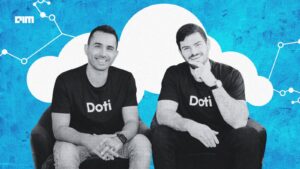Levi Strauss & Co. just announced a partnership with Microsoft to develop an enterprise “super-agent” built on Azure and integrated into Microsoft Teams, designed to route employee questions to specialized sub-agents across functions including IT, HR and operations.
The rollout begins in early 2026. The initiative follows a year in which Levi’s introduced several AI systems across its stores, ecommerce operations and customer experience, including the STITCH store assistant, an AI-generated outfitting tool in the Levi’s app and new AI-based fraud-prevention capabilities.
Together, these projects show the company building a multi-layered AI infrastructure across its retail and digital operations.
The Enterprise Layer
The Microsoft partnership gives Levi’s a new Azure-native “orchestrator agent” embedded in Microsoft Teams that serves as a front door to multiple behind-the-scenes sub-agents covering IT, human resources, operations and more.
According to Levi’s, the platform is being built and tested now, with rollout scheduled in early 2026 and global expansion through the year.
Jason Gowans, Chief Digital & Technology Officer at Levi’s, said, “We’re rewiring Levi Strauss & Co. to be a DTC-first, fan-obsessed retailer making every interaction faster, smarter and more personal. AI sits at the center of that pivot, fueling innovation, elevating employee creativity, unlocking productivity and helping us deliver the connected, memorable experiences that keep our fans returning again and again.”
Under the hood, Levi’s is equipping its workforce with Microsoft Surface Copilot+ PCs, Windows 11 features (like the dedicated Copilot key), and using Microsoft Intune for zero-touch onboarding. The company is moving workloads from on-premises data-centres to Azure, deploying Azure AI Foundry and Semantic Kernel for intelligent automation, and building a zero-trust security posture as a foundation for this AI-driven architecture.
With that level of infrastructure investment Levi’s is shifting far beyond the incremental use of chatbots or analytics. The enterprise layer shows the company sees AI agents as the structural backbone of how work flows.
The Store Layer
The next tier in the architecture places AI directly in Levi’s 3,200-store global footprint. The company launched a store-assistant app named STITCH, built in partnership with Google Cloud following an internal hackathon. STITCH gives store stylists and associates on-demand access to product information, training materials and operational procedures.
Levi’s piloted STITCH in 10 U.S. stores; under its 2025 programme it is being rolled out to 50 additional U.S. locations with plans to expand globally.
According to employees featured in the company’s release blog, the app helps staff on the floor assist customers in real time. “Training takes time, and having instant access to accurate information means my team can confidently help shoppers even on their first day. STITCH is like a reliable teammate: ready to provide answers and support in real-time,” said Store manager Angel Mendoza.
For Levi’s, the store layer is important because the company is attempting to reduce friction in its physical-retail operations and enable its stylists to focus on shopper relationships rather than memorizing specs. As the press notes: “Instead of memorizing hundreds of product specifications, they can focus on understanding what each shopper needs and creating personalized experiences that keep them coming back.”
In effect, Levi’s is transforming each store into a digital-operated environment where AI supports the front line at the moment of customer interaction.
The Customer Layer
If the enterprise and store layers focus on how Levi’s works, the customer layer is about how Levi’s engages its fans. One cornerstone of this effort is an app feature called Outfitting: an AI-powered module within the Levi’s mobile app that generates styled outfits based on denim selection, browsing behaviour, product imagery, inventory data and purchase history.
Priya Buening, Head of E-Commerce U.S. at Levi’s, said, “From the products we create to how we run our stores and digital platforms, everything starts with our fans, one outfit at a time.”
The feature is live in the U.S., Canada and major European markets, with further rollout and enhancements (including a conversational AI-stylist chatbot) planned for 2026.
Levi’s is also using AI to detect post-purchase fraud and automate claims management. In a January 2025 industry article noting Levi’s use of an AI-based fraud-prevention platform, the company said it “reduces fraud, increases personalization post-purchase with AI.”
Across these initiatives, Levi’s is blending internal operations with external experience: the same agentic systems that streamline workflows help deliver faster, smarter customer interactions.
Why It Matters
Levi’s 2025 AI effort is significant. First, it demonstrates a retail business using agentic AI in multiple layers (enterprise, store, customer) rather than treating AI as siloed pilots. Second, by aligning the super-agent launch with the store assistant, app styling tool and fraud-analytics systems, Levi’s shows the pieces are part of a unified architecture rather than ad-hoc experiments. The architecture supports the company’s stated direct-to-consumer (DTC) shift and aims to underpin its ambition to become a $10 billion retailer. Michelle Gass, President & CEO of Levi Strauss & Co., said, “AI represents a tremendous opportunity for us and is a key unlock as we rewire how we work, from our stores to our corporate offices.”
For analysts and competitors, Levi’s is offering a blueprint for how heritage brands might transform themselves for an AI-driven future.











